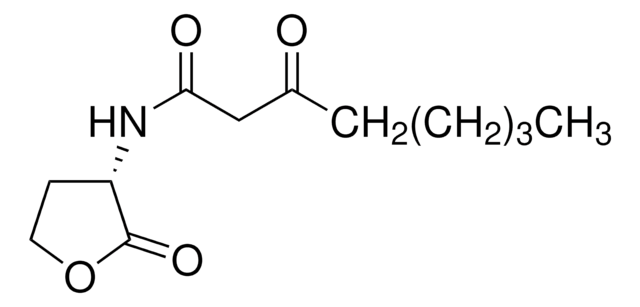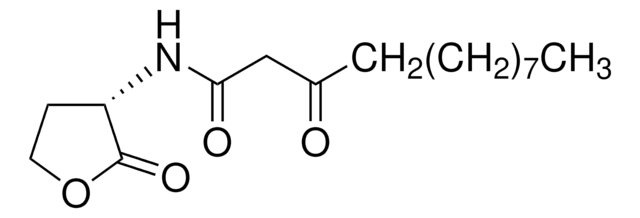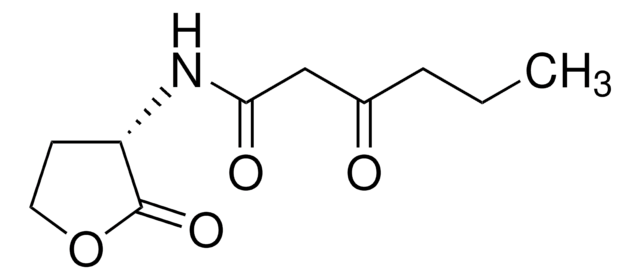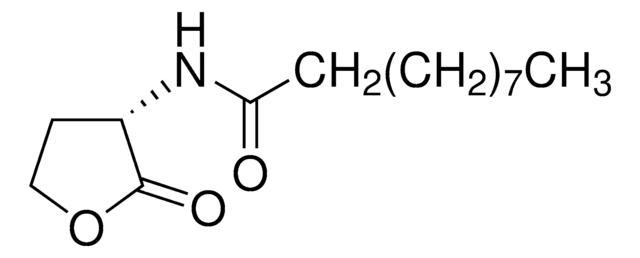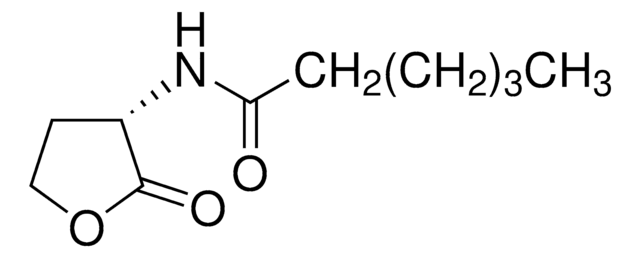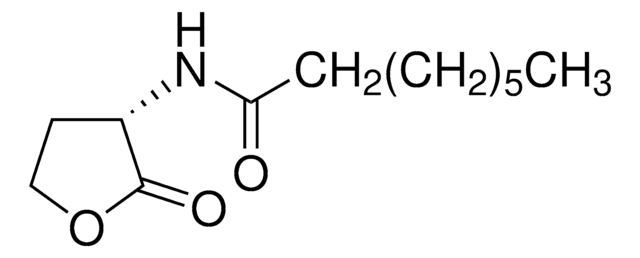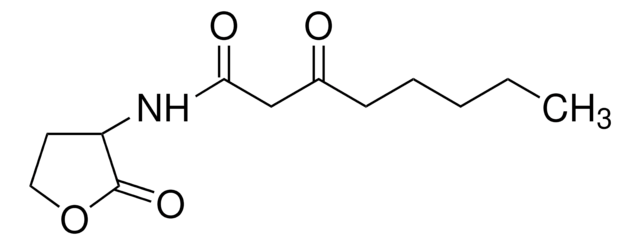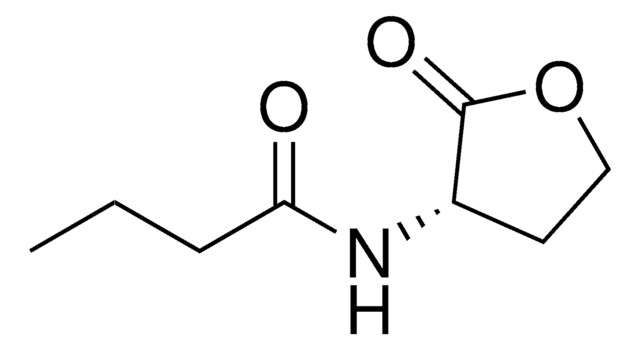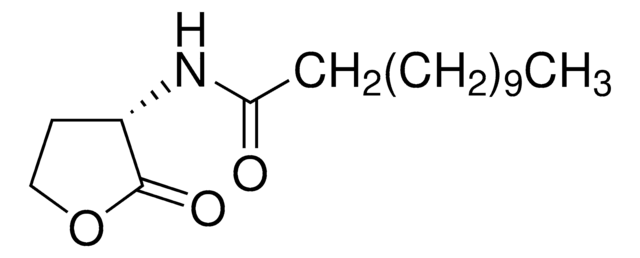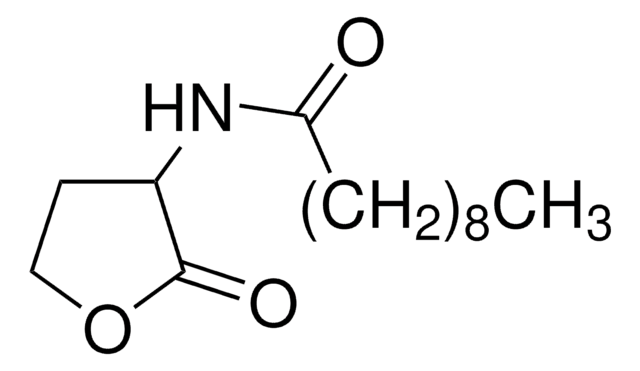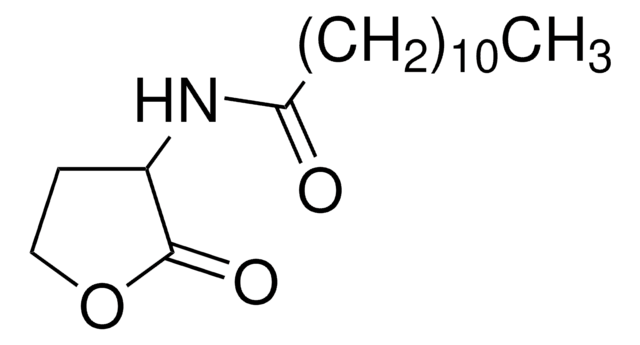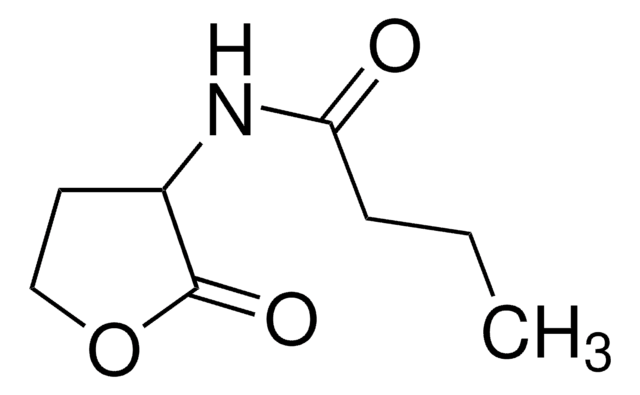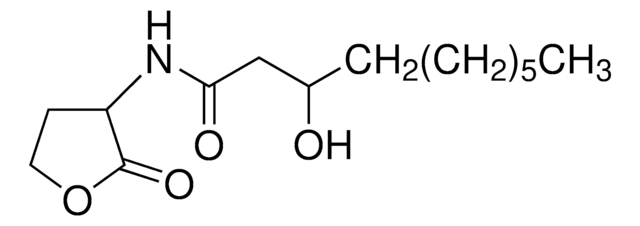Wichtige Dokumente
O9014
N-(3-Oxodecanoyl)-L-homoserine lactone
≥98% (TLC)
Synonym(e):
3-Oxo-N-[(3s)-2-Oxotetrahydrofuran-3-Yl]decanamide
About This Item
Empfohlene Produkte
Produktbezeichnung
N-(3-Oxodecanoyl)-L-homoserine lactone,
Assay
≥98% (TLC)
Qualitätsniveau
Form
powder
Farbe
white
Anwendung(en)
cell analysis
Versandbedingung
wet ice
Lagertemp.
−20°C
SMILES String
CCCCCCCC(=O)CC(=O)N[C@H]1CCOC1=O
InChI
1S/C14H23NO4/c1-2-3-4-5-6-7-11(16)10-13(17)15-12-8-9-19-14(12)18/h12H,2-10H2,1H3,(H,15,17)/t12-/m0/s1
InChIKey
KYGIKEQVUKTKRR-LBPRGKRZSA-N
Verwandte Kategorien
Allgemeine Beschreibung
Anwendung
Biochem./physiol. Wirkung
Lagerklassenschlüssel
11 - Combustible Solids
WGK
WGK 3
Flammpunkt (°F)
Not applicable
Flammpunkt (°C)
Not applicable
Persönliche Schutzausrüstung
Eyeshields, Gloves, type N95 (US)
Hier finden Sie alle aktuellen Versionen:
Besitzen Sie dieses Produkt bereits?
In der Dokumentenbibliothek finden Sie die Dokumentation zu den Produkten, die Sie kürzlich erworben haben.
Kunden haben sich ebenfalls angesehen
Unser Team von Wissenschaftlern verfügt über Erfahrung in allen Forschungsbereichen einschließlich Life Science, Materialwissenschaften, chemischer Synthese, Chromatographie, Analytik und vielen mehr..
Setzen Sie sich mit dem technischen Dienst in Verbindung.